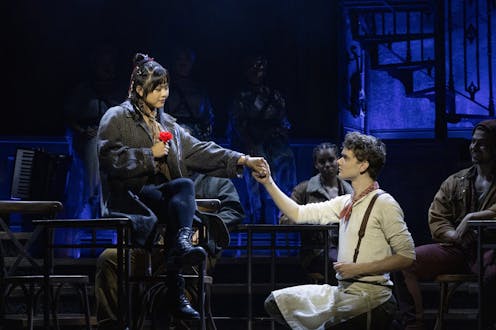
“It’s an old song”, Hermes (Christine Anu) sings at the opening of Hadestown, but “we’re gonna sing it again and again”.
Based on a myth first told in Greece over 2,500 years ago, Hadestown is a modern retelling of the story of lovers Orpheus and Eurydice.
In ancient Greece, Orpheus was considered the greatest of all musicians, due to his divine heritage. His musical ability makes Orpheus uniquely well suited as the lead for a musical.
In the myth and the musical, Orpheus descends into the Underworld to retrieve his wife, Eurydice, after her untimely death. Moved by his powerful song, the king and queen of the Underworld, Hades and Persephone, allow Orpheus to leave their realm with Eurydice.
One condition: Orpheus must not look back at his wife until they have fully emerged from the underworld.
It’s a tale of a love from long ago
The story of Orpheus and Eurydice is one of the most retold myths from antiquity, likely due to its narrative focus on love, loss, and the human condition.
The ancient story of Orpheus and Eurydice is best known from Ovid’s Metamorphoses and Virgil’s Georgics. While Ovid places Orpheus in a world governed by unpredictable gods, Virgil’s focus on natural order means that the tragic events feel predetermined.
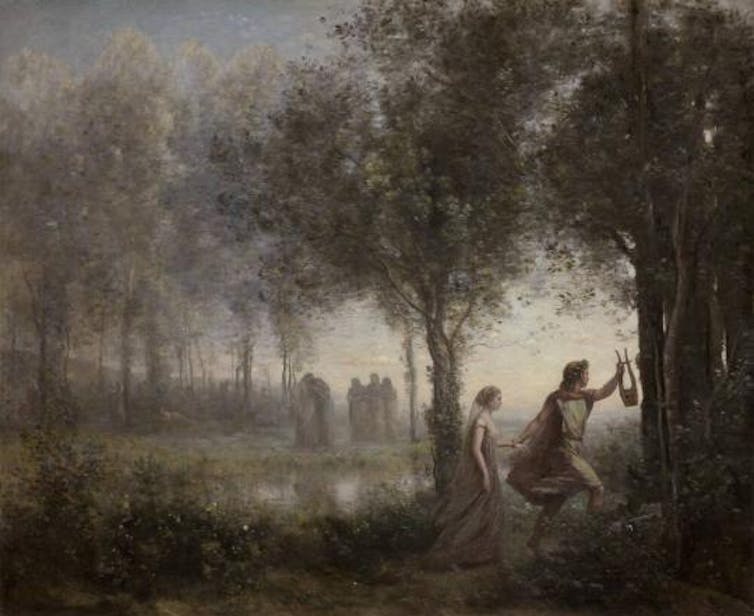
There are numerous other ancient versions, including a mention in Plato’s Symposium, where the philosopher (somewhat unfairly) suggests the musician lacked commitment to his lover.
During the Middle Ages, Eurydice was paralleled with biblical Eve. Eurydice and Eve were both figures known to have unfortunate encounters with snakes, and both were viewed as vulnerable to sin (in Eurydice’s case, being carried away by Hades).
Orpheus was sometimes seen as a Christ-like figure, with his descent to hell compared to Christ’s journey to save souls. Indeed, Orpheus is referenced by his fellow traveller to Hell, Dante, in his Inferno.
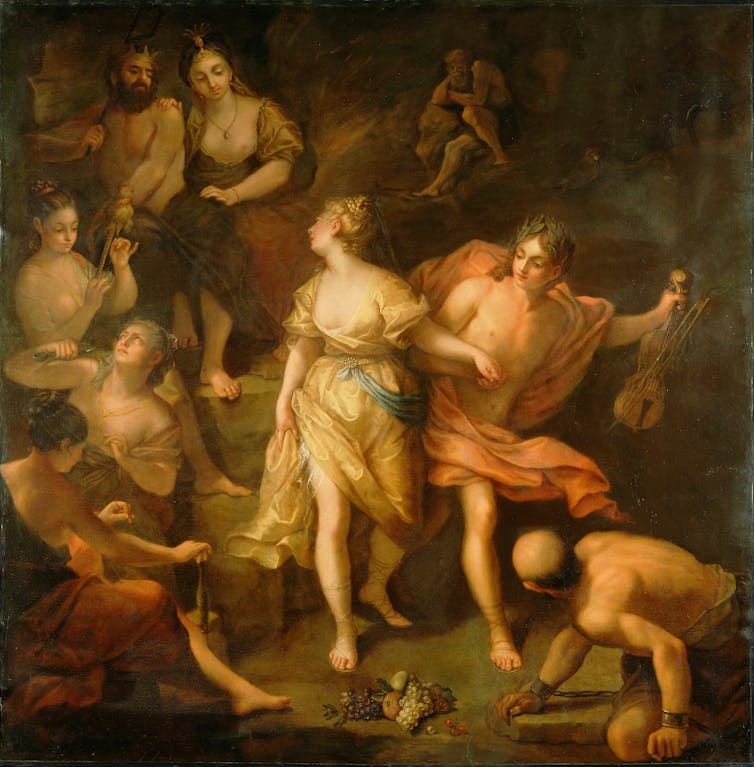
The lovers’ story inspired artists such as Rubens and Titian, and many operas, such as L’Orfeo by Monteverdi (1607). Indeed, operas featuring Orpheus are sufficiently numerous to have their own Wikipedia page.
The love story of Orpheus and Eurydice recently featured in the Netflix series Kaos (2024). The story is referenced in video games Don’t Look Back (2009) and Hades (2020).
Orpheus’ desperate journey to reconnect with his lost love holds continued relevance, thousands of years after its first telling.
Our lady of the underground
In the musical, the story of Orpheus and Eurydice is paralleled with the story of Hades and Persephone.
In ancient myth, the union of Hades and Persephone in the Underworld was said to cause the changing of the seasons.
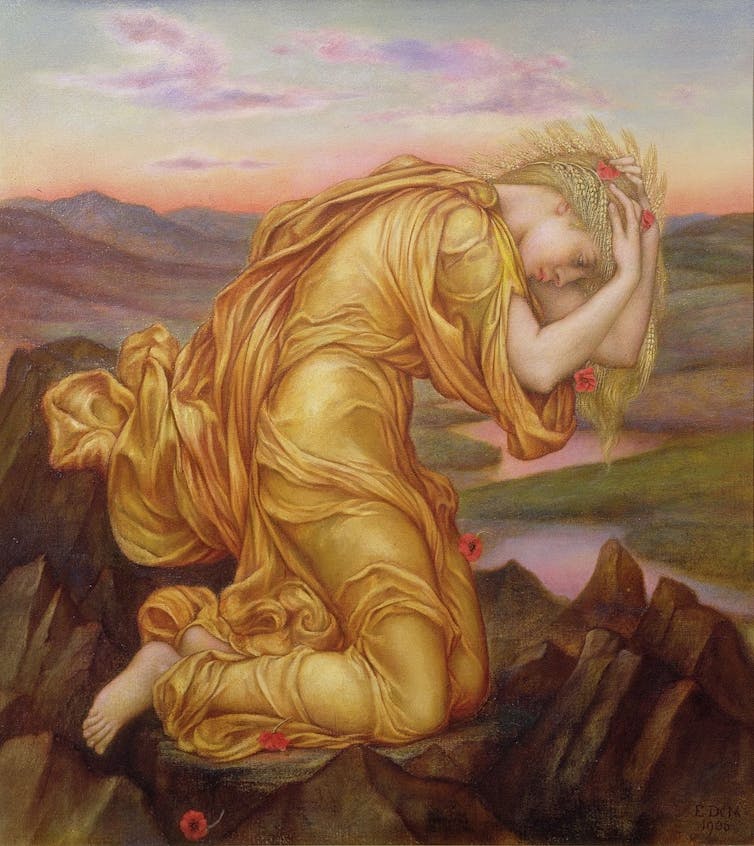
Persephone’s divine mother, Demeter, goddess of the harvest and fertility, was so devastated by her daughter’s abduction by Hades that no plants would grow.
Zeus offered the solution: Persephone would spend half the year below ground and half above.
When Persephone was with Hades, the world would enter winter. The new life connected with the coming of spring signalled Demeter’s joy at the return of her beloved daughter.
Way down Hadestown
The musical, written by Anaïs Mitchell, is largely faithful to the broad arc of the ancient story of Orpheus and Eurydice. A notable exception is seen in the death of Eurydice. In the ancient myth, this is often attributed to snakebite; in the musical she chooses to descend to the Underworld due to economic desperation.
Having Eurydice choose to sign her life over to Hades arguably lends her a limited amount of agency, although she almost immediately regrets her decision.
The choice to give Eurydice a more distinctive voice is reminiscent of the works of Victorian poets Edward Dowden and Robert Browning, as well as later poems by Margaret Atwood and Carol Ann Duffy.
While in the ancient myth, Eurydice’s speech is limited to her whispered farewell, these poets all give us an insight into Eurydice’s thoughts and feelings. The musical continues this tradition of giving agency, hopes and opinions.
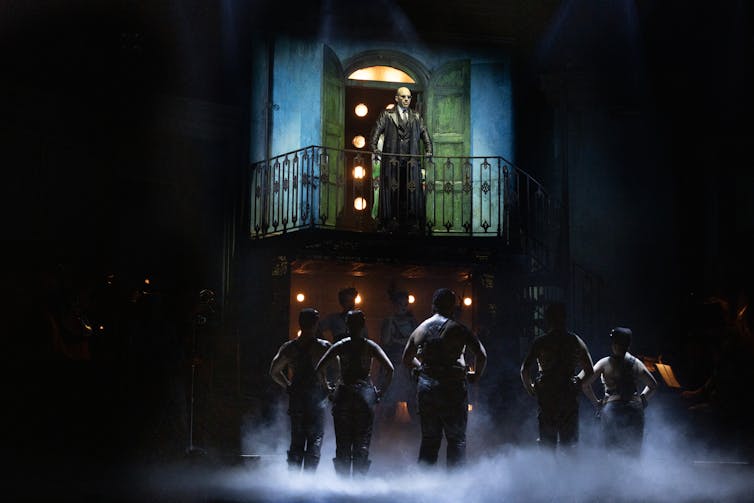
The dangers posed by unpredictable seasons, seen in the ancient myth of Hades and Persephone, is used in the musical to reflect modern concerns over climate change and environmental decline.
Rising seas and poor harvests threaten the lives of those inhabiting the industrialised world of Hadestown.
Orpheus attempts to bring a dystopian world “back in tune” through restoring environmental harmony, bringing a hopeful note to the tragic story.
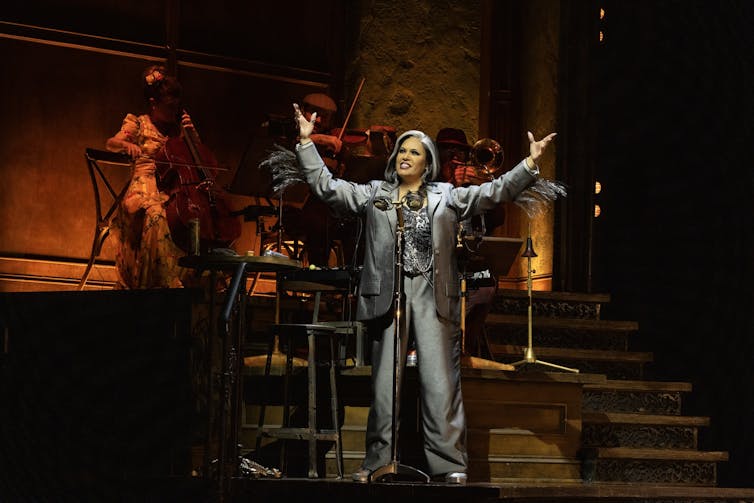
Nothing changes
In this Australian restaging of the hit Broadway production, Noah Mullins rises to the significant challenge of portraying Orpheus, the greatest of all musicians. Abigail Adriano’s raw portrayal of Eurydice’s confinement in the underworld is genuinely moving.
Anu is a reassuring presence as the narrator and Orpheus’ confidant, the god Hermes. Adrian Tamburini’s powerful bass-baritone adds to the authority of Hades, and Elenoa Rokobaro gives a dazzling performance as Persephone. The chorus and mostly on-stage band are excellent.
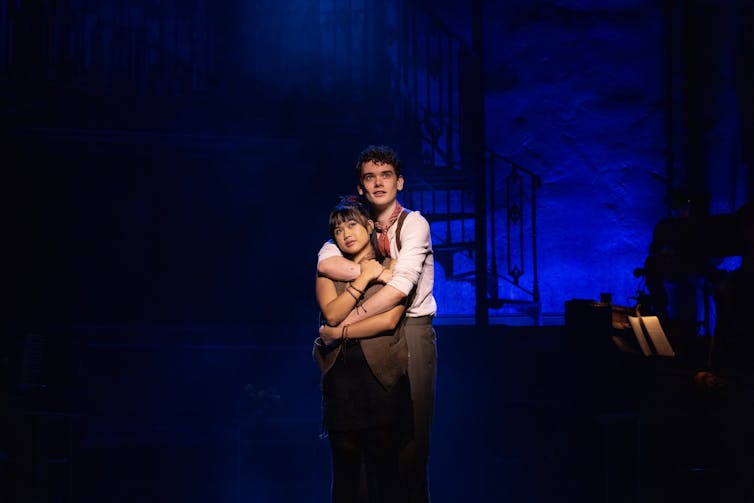
At its heart, the myth of Orpheus and Eurydice confronts one of the defining challenges of mortality: the reality that death can separate us from those we love and value most.
In retelling the myth, Hadestown offers timely meditations on the power of creativity and human connection, bringing this ancient love story alive again for modern audiences.
Hadestown is in Sydney until April 26, then touring to Melbourne.
Louise Pryke does not work for, consult, own shares in or receive funding from any company or organisation that would benefit from this article, and has disclosed no relevant affiliations beyond their academic appointment.
This article was originally published on The Conversation. Read the original article.







